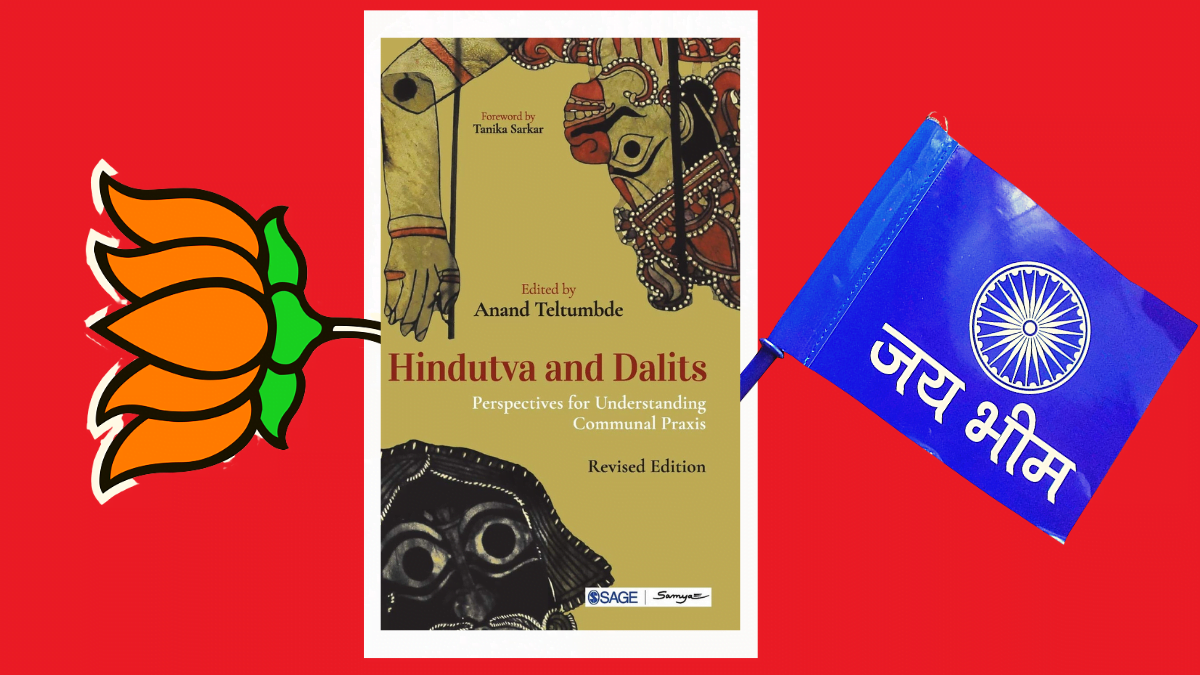“Hindutva and Dalits: Perspectives for Understanding Communal Praxis”, jointly published by SAGE Publications and Stree Samya Books, makes for a timely re-appearance in a revised version in 2020, from an earlier edition of 2005 – an advent that brings to attention the specifics of the years that mark the upsurge of communal disharmony, and casteism in the country. The year 2005 was three years ripe into bearing the afflictions of the 2002 Gujarat Riots, a wound that continues to fester into the present day with the NDA in power.
In the foreword, esteemed historian Tanika Sarkar addresses the temporal gap between the two editions, attributing it to ‘track the changes that have occurred in the intervening years’ as well as ‘historicis(ing) the Dalit-Hindutva relationship’. The foreword serves its purpose, and launches the readers right into the tempestuous history of Dalit-Hindutva relationship.
Divided into two parts, namely ‘Theoretical Perspectives’, and ‘Hindutva in Operation’, the book motions from a theoretical base to illustrative glimpses of the conflict(s) that seep through the everyday life, visible or invisible.
Divided into two parts, namely ‘Theoretical Perspectives’, and ‘Hindutva in Operation’, the book motions from a theoretical base to illustrative glimpses of the conflict(s) that seep through the everyday life, visible or invisible.
The first essay titled, ‘Dalits in the Theory and Practice of Hindutva’ aptly establishes the tone of what is to be explored in the book. The remnants of Manusmriti that Ambedkar had burnt in the 1927 Mahad Conference rise from the ashes, as the author traces the return of the ‘Manav Shastra’ that is universally notorious as the ‘antithesis to the existence and rights of Dalits and women.’ This second return is anticipated days before the celebration of the 55th Republic Day by way of a promulgated ordinance on cow slaughter by the then BJP Government of Madhya Pradesh led by Uma Bharti. The rationale behind the cow slaughter is secured upon the ancient laws of Manu where the slaughterer of the cow is no less than a predator, and is fit for the harshest of punishments.
This privileging of the Manusmriti over the Constitution and the ban on the cow slaughter were just the tip of the wider malady that would soon assail the democratic and secular fabric of the country. The repetitive harking on Manusmriti permeates the rest of the book, where bit by bit, the ‘changing colours of the chameleon’, that is the project of ‘Hindutva’ highlighted.
Another particularly delineated piece that stands out is Meena Kandasamy’s ‘Between Her Legs: Hindutva and Dalit Women’. The essay travails the contested terrains of Hindutva ‘biopolitics’, if I may use the term. She brings to attention the anxiety created by inter caste marriages, the idea of a ‘Hindu nari’ which is more at ease conforming to the mould of ‘dharmapatni’, and ‘matrishakti’, and the politics of popular consumption and its intricate connections with the Sangh Parivar. To draw attention to the aptness of the essay’s title, she provides a glimpse into the ‘action’ and ‘vision’ of the RSS ideology. From an RSS-affiliated book, she offers two incidents that very tellingly convey the myopic idea of a ‘Hindu woman’ – one committed to propriety, her sexuality regulated.
Also read: Book Review: Feminism Redefined In Margo’s Memoir Called Negroland
All in all, the consumption of saffron ideology has become an everyday occurrence – a key point highlighted by Teltumbde in his essay, ‘Hindutva, Dalits, and the Neo-liberal Order’ – how the neo-liberal order necessitates a vista for the saffron ideology to proliferate. He elaborates how elite spaces are created – by way of ‘class-oriented schooling system’, coaching classes, private colleges, thereby systematically ignoring Dalits. If one were to contest this claim, claiming that Dalits have a safety net by way of ‘reservation’ as guaranteed under the Constitution, it is important to note that this safeguard has either seen a dismal fall, or has been ‘rendered meaningless’ by the current neo-liberal order. The neo-liberal order runs the risk of ‘deflecting the attention of the masses from the real issues’ as well as ‘reinforcing conformism’.
The essays in the book provide an insight, if not an answer to the contemporary communal and casteist violence that is beginning to redefine the nature of ‘secular’ India. Recent examples include the anti-CAA protests, the lynching, and the love-Jihad laws to name a few.
The roots of this ‘deflection’ and ‘reinforced conformism’ are mapped, literally and figuratively in the rest of the essays in the collection – from the ‘engineered pogrom’ in Gujarat, to the gradual infiltration of Hindutva ideology in Tamil Nadu, and the more recent ‘et tu, Brutus’ moment in the Maharashtra Election.
Moreover, the fraught relation between Dalits and Hindutva, and amongst the Dalits is highlighted in Puniyani’s essay, ‘Hindutva’s Social Engineering: Dalit’s Participation in the Anti-Muslim Pogrom, Gujarat 2002’, where the ‘foot soldiery’ of the Dalits is the symptom of the wider disorder that is Hindutva, taking Muslims and Christians as well in its lethal sweep. The timely comparison to Hitler and Mussolini’s fascist rule serves as the final nail in the coffin of this scapegoating politics.
The essays in the book provide an insight, if not an answer to the contemporary communal and casteist violence that is beginning to redefine the nature of ‘secular’ India. Recent examples include the anti-CAA protests, the lynching, and the love-Jihad laws to name a few.
Also read: Book Review: Name, Place, Animal, Thing By Daribha Lyndem
The book qualifies as a certain read in these uncertain times, a very comprehensive read allowing the readers to navigate through, and understand the underlying causes of the conflicting times we inhabit.
About the author(s)
Sonakshi is currently pursuing her post graduation in English from Delhi University. A keen flaneur, she loves to read, and takes a keen interest in art and culture. She hopes to conquer world literature, and be a writer one day.




